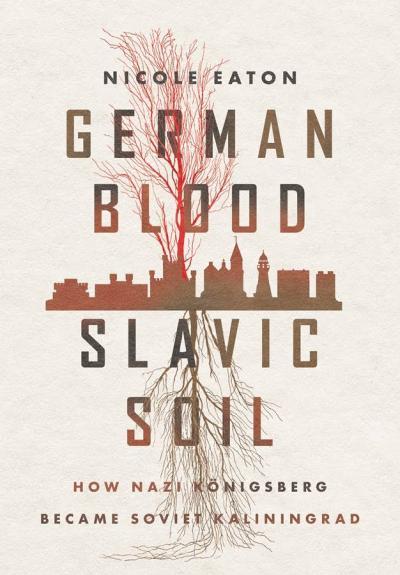| Title: | German Blood, Slavic Soil - How Nazi Königsberg Became Soviet Kaliningrad |
| Writer: | Eaton, Nicole |
| Published: | Cornell University Press |
| Published in: | 2023 |
| Pages: | 315 |
| Language: | English |
| ISBN: | 9781501767364 |
| Review: | Before 1945, the East Prussian city of Königsberg served as both a bastion and a bridge on the border between Germany and Slavic Eastern Europe. While there was latent tension between Germans and their Polish and Russian neighbors (sometimes escalating into war), there was also intensive trade, especially in agricultural products, timber, and furs. However, this did not mean that Königsberg was a 'mixed city' in a cultural sense. Around 1800, Königsberg had grown to be one of the largest German cities with about sixty thousand inhabitants, but most of its residents came from other German regions, while a process of 'Germanization' took place in the city and its surroundings. The city of Königsberg itself, with its renowned university where a famous philosopher like Immanuel Kant was associated, was a shining center of German culture. Nevertheless, in the early twentieth century, there were still villagers in East Prussia who held on to old Lithuanian and Polish dialects. American historian Nicole Eaton, affiliated with Boston College, describes how the aftermath of World War I fatally fueled the role of Königsberg as a 'German bastion against the Slavic threat from the east.' Thanks to the Treaty of Versailles, Poland gained a corridor to the Baltic Sea, cutting off East Prussia from Germany. Partly as a result, Adolf Hitler's revanchist rhetoric gained a lot of support in Königsberg - in the March 1933 elections, the NSDAP (Nazi Party) secured an absolute majority of 56.5% in East Prussia, the highest score in all of Germany. Under the leadership of Erich Koch, originally from the Rhineland, a powerful party organization was established. During World War II, Koch, who always retained Hitler's trust, even expanded his rule into parts of Poland and Ukraine. With the collapse of the Third Reich in 1945, the population of East Prussia, those who couldn't flee to the West, would be brutally confronted with the kind of misery that the Nazis had previously inflicted on other countries for years. Königsberg now became the scene of mass rapes, destruction, and looting by the Red Army. That horrific story is well known in itself. Nicole Eaton adds some lesser-known observations. She notes that Stalin and his military leadership initially did not seem to have well-defined views on the status of Königsberg and its German inhabitants. The city was annexed, and more and more Russians began to settle there, but thousands of Germans still lived in the city, although they could not claim Soviet citizenship. In 1948, the last Germans were finally expelled from the city. The reconstruction of what was now called Kaliningrad was done in Soviet style, but to this day, there are numerous traces of the German past in the city and its surroundings. Nicole Eaton's very interesting and well-written historical study has taken on a different perspective with Putin's war against Ukraine. After the fall of communism in 1989 and the German reunification a year later, former East Prussia had once again taken on a bridging function, with former German inhabitants and their families visiting their old 'Heimat' as tourists, and it seemed like the wounds of the past were healing. However, Kaliningrad has suddenly become a 'bastion' again, but as a completely isolated Russian enclave in the West, surrounded by Polish and Baltic states that are strengthening their armies and digging in. |
| Rating: |      Excellent Excellent |
Information
- Article by:
- Jan-Jaap van den Berg
- Published on:
- 09-09-2023
- Feedback?
- Send it!



